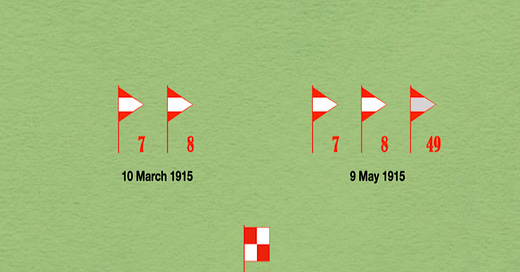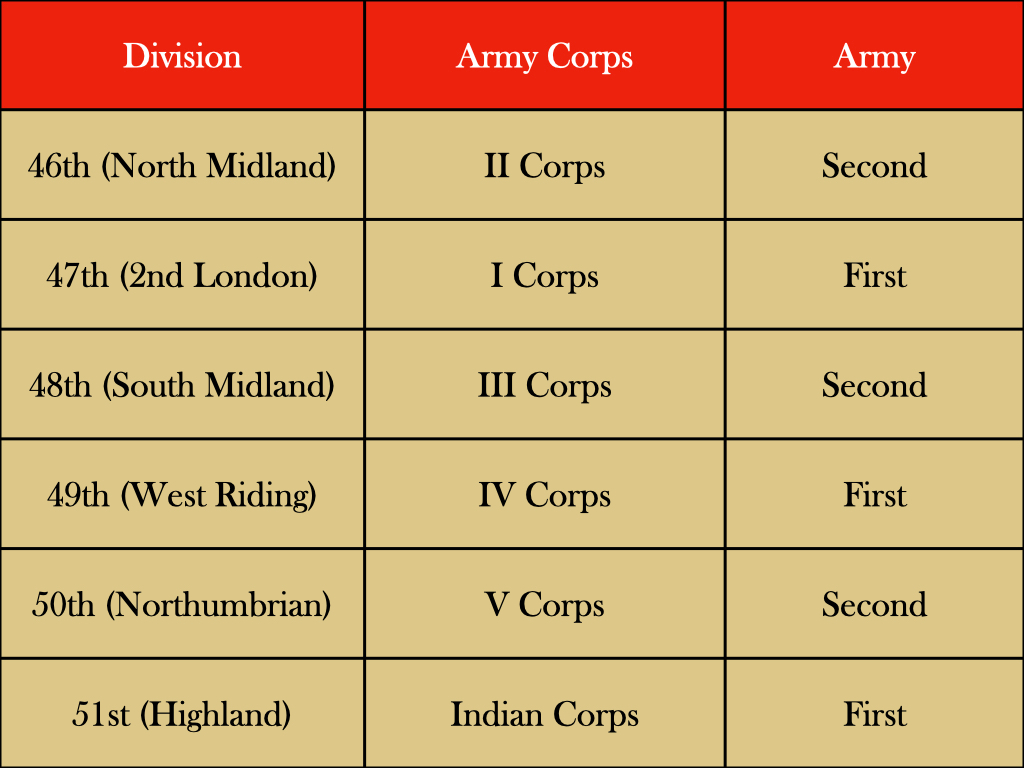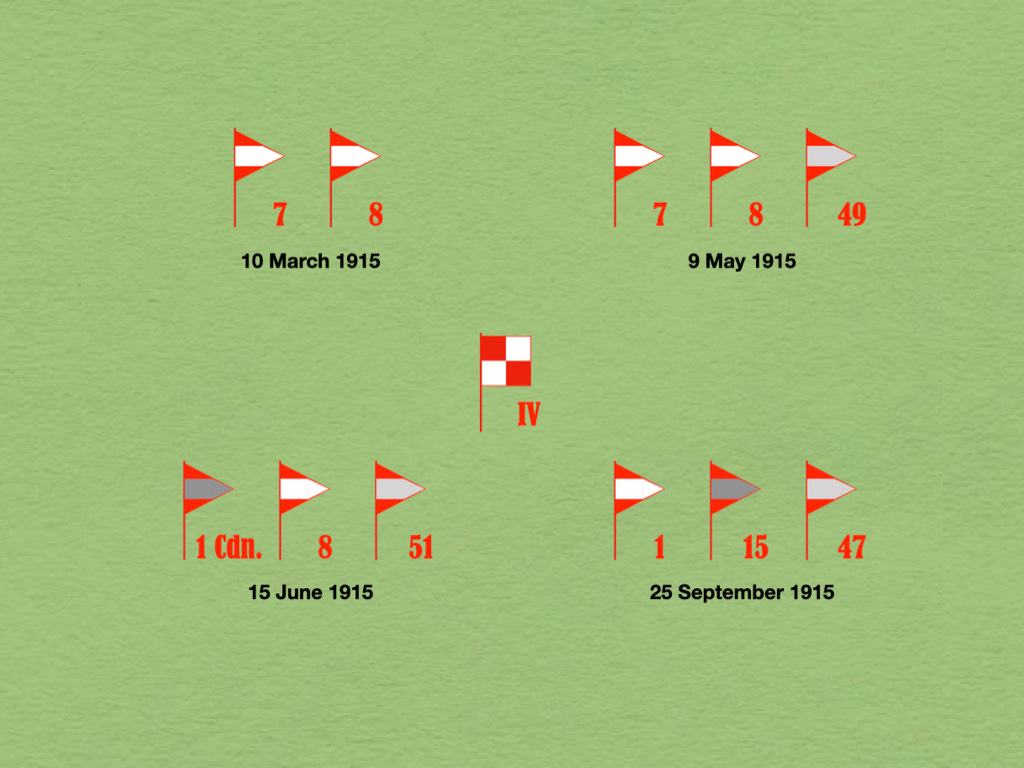The assignment of a Territorial Force division to each of the army corps of the Expeditionary Force created a series of lopsided formations, each of which consisted of two full-strength divisions and one relatively weak division.1 This asymmetry, however, would not last for long. Once the Territorial Force divisions had exchanged their old artillery pieces for new guns and howitzers, had brought their battalions up to strength, and had gained some experience of modern war, they would become the functional equivalents of the infantry divisions that had preceded them to France. However, well before the process of upgrading Territorial Force divisions had been completed, the impending arrival of nine New Army divisions raised, once again, the question of the best way to organize the army corps serving in France and Flanders.2
From the point of view of organization, the nine New Army divisions possessed two salient virtues. First, their batteries were armed with factory-fresh artillery pieces of the same types used by comparable units of the Regular Army divisions. Second, their infantry battalions were not only up to establishment, but, thanks to the system of depot battalions, likely to stay that way. Thus, the chief differences between a New Army division and its Regular Army counterpart lay entirely within the realm of experience.
The solution adopted to accommodate the nine New Army divisions made the most of these characteristics. It began with the creation of three new army corps, thereby giving the Expeditionary Force nine formations of that type. Each army corps, in turn, received one New Army division and two divisions of types that were already serving at the front. Ideally, one of the latter would be a Regular Army division and one would come from the Territorial Force. However, as but six Territorial Force divisions were available, three of the army corps received two Regular Army divisions apiece.
The scheme for incorporating New Army divisions into army corps wrought two changes to the character of such formations. The first of these was the transformation of what had been a permanent home for two infantry divisions into what might be called a “school for divisions.” That is, divisions new to the Western Front joined existing army corps and, in doing so, displaced experienced divisions The latter divisions, in turn, became the nuclei around which new army corps were formed. The second change, which followed hard on the heels of the first, was conversion of “schools for divisions” into stand-alone headquarters that, according to the needs of the moment, could be used to coordinate the actions of two, three, or four divisions.3
The information in the table comes from Becke, Order of Battle of Divisions, Part 2A, pages 66, 74, 82, 90, 99, and 106.
The first eight New Army divisions (three from the First New Army and five from the Second New Army) joined the Expeditionary Force in the late spring and early summer 1915. The 16th (Irish) Division, which was originally expected to be part of this group, did not join the Expeditionary Force until the autumn of 1915. Its place in the organizational scheme was taken by the Canadian Division.
The information presented in the diagram comes from A.F. Becke, Order of Battle, Part 4 (London: HMSO, 1945), page 157.






